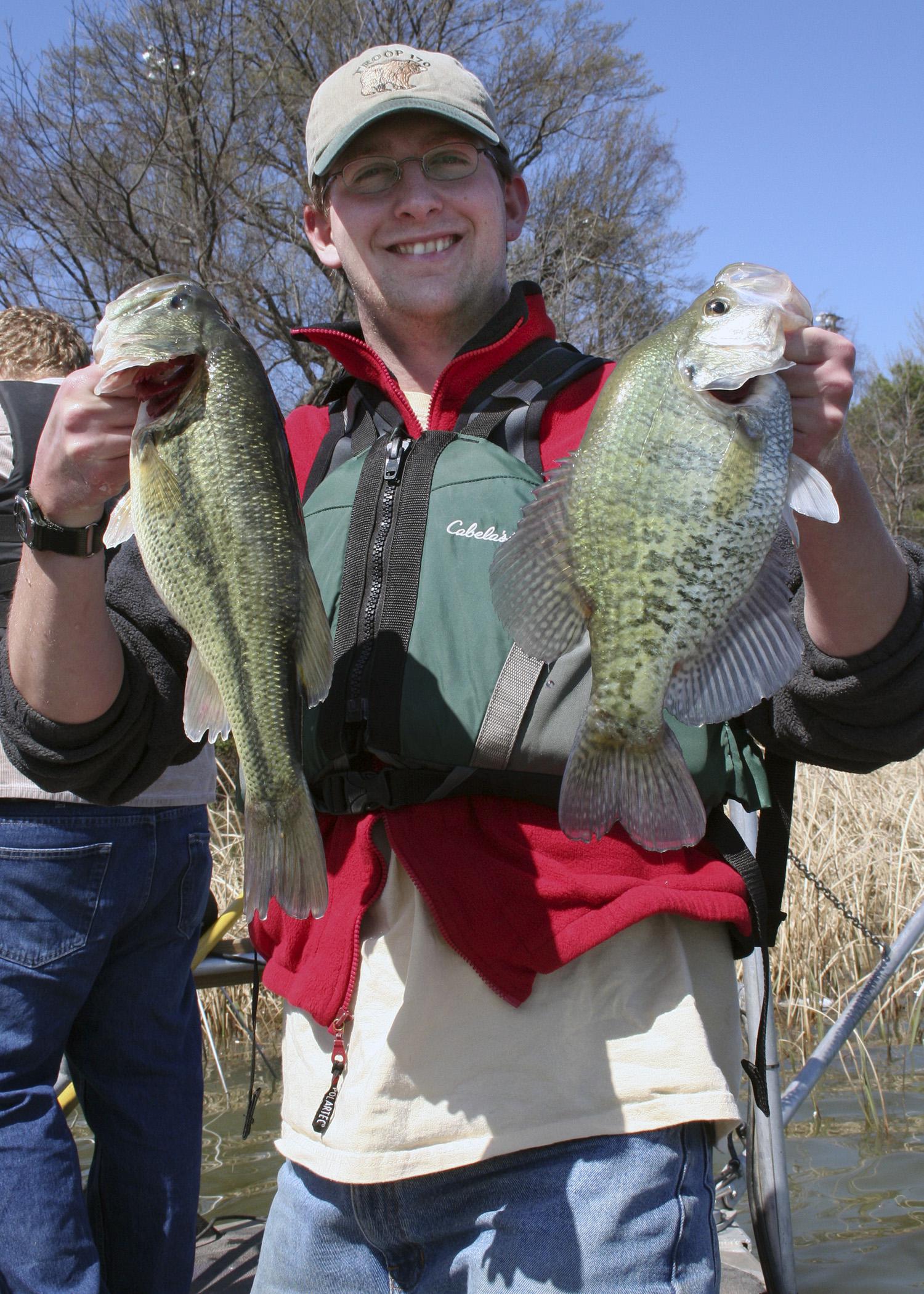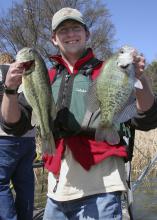Information Possibly Outdated
The information presented on this page was originally released on September 5, 2014. It may not be outdated, but please search our site for more current information. If you plan to quote or reference this information in a publication, please check with the Extension specialist or author before proceeding.
Think twice before putting crappie in ponds
MISSISSIPPI STATE -- Many landowners would like to fish for crappie in their ponds and small lakes, but crappie can cause major problems in smaller waters.
The diet of crappie is very similar to the diet of other desired pond species, such as bass and bream. This overlap in dietary needs between species is not a problem when the population of crappie in a pond is low.
Crappie have a tendency to produce inconsistent numbers of young. After stocking a pond, you may not have many crappie for several years. Then suddenly, for reasons that are not clear, the crappie population will explode and fill the pond with small, hungry crappie.
When a swarm of young crappie enter a pond, they eat all of the food needed by both bass and bream. This causes bass and bream to grow slowly and become thin. So if you have a pond in which good fishing for bass and bream is important, do not stock crappie.
If you already have crappie in a small lake or pond, or if you absolutely must stock crappie, there are some things you can do to improve your chances at successfully raising this species.
The key to raising larger crappie is to increase the abundance of predators by overcrowding the pond with bass. Large numbers of small, hungry bass will eat most of the young crappie, even in boom years of the crappie lifecycle. Fewer crappie means more food available to fewer fish. As a result, the crappie will grow better and larger.
Still want crappie?
If so, there are a few things you should know. There are two species of crappie, but black crappie are best suited for ponds. The easiest way to tell the two apart is to count the spines on the fin on the crappie’s back. White crappie have 5 to 6 spines, while black crappie have 7 to 8 spines.
Before introducing crappie, be sure your pond will be clear most of the time. This means you should be able to see a light-colored object in 18 to 24 inches of water, except for a few days following heavy rainfall and runoff. Crappie are sight feeders and will not do well in muddy water.
Stock 15 adult black crappie per acre in either an established pond with balanced numbers of bass and bluegill or in one that is bass-crowded. Catch and remove all bass longer than 15 inches.
Never harvest smaller bass. These smaller bass will control the crappie population and allow the remaining fish to grow faster.
Good crappie fishing in farm ponds is difficult to maintain for long periods of time. If the pond gets out of balance and overpopulated with small crappie, stock 30 to 50 adult bass that are 10 to 12 inches long, per acre. This will increase predation on the small crappie and help reduce the population size.
Winter drawdown is also an effective management technique to prevent crappie overcrowding. Draw down the pond to half its normal surface area early in the fall. Stop any bass harvesting during this time. The draw down makes it easier for bass to find and eat the crappie. Let the pond refill during the late winter and spring.
Unfortunately, you cannot have the best of both worlds. If you want crappie fishing, you must forget about quality bass fishing. A correctly managed crappie pond usually will not have big largemouth bass to catch. Choose one species, and manage for that species.
For more information on crappie, bass and farm pond management, visit the Mississippi State University Extension fisheries web page at http://bit.ly/msufish.

Editor’s Note: Extension Outdoors is a column authored by several different experts in the Mississippi State University Extension Service.




